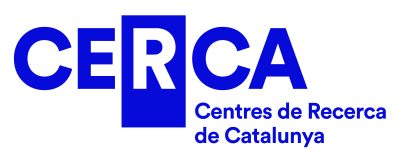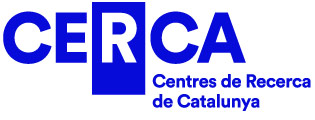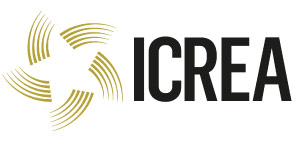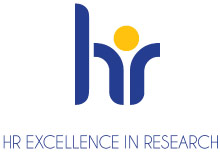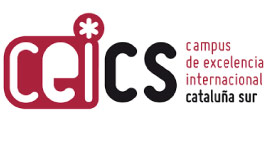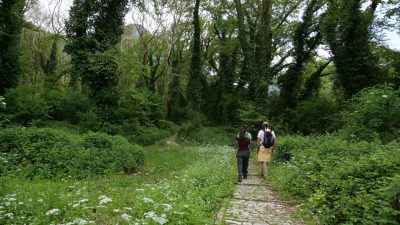
The plenary session of the UNESCO World Heritage Committee in Riyadh has confirmed the inscription of the Cultural Landscape of Zagori on the UNESCO World Heritage List.
At ICAC, we have many reasons to celebrate this. Especially because one of our postdoctoral researchers, Dr. Faidon Moudopoulos-Athanasiou, has been a key member of the editorial team that drafted the candidacy proposal, under the supervision and coordination of the Greek Ministry of Culture.
As highlighted by the UNESCO World Heritage Committee, “the Cultural Landscape of Zagori is an outstanding example of traditional human settlement, land use (…), which represents a culture or the interaction between man and their environment.” (Source: UNESCO press release).
At ICAC, we commemorate this remarkable achievement, which not only acknowledges the magnificence of these cultural landscapes but also highlights the imperative to protect them.
Zagori‘s history ranges from prehistoric times and shows continued human presence throughout the ages, up until today. As the UNESCO website states: “Located in a remote rural landscape in northwestern Greece, small stone villages known as Zagorochoria extend along the western slopes of the northern part of the Pindus mountain range.
These traditional villages, typically organized around a central square containing a plane tree and surrounded by sacred forests maintained by local communities, showcase a traditional architecture adapted to the mountain topography. A network of stone-arched bridges, stone cobbled paths, and stone staircases linking the villages formed a system that served as a political and social unit connecting the communities of the Voïdomatis River basin. (Source: UNESCO).
Dr. Faidon Moudopoulos-Athanasiou‘s connection with Zagori runs deep. Prior to joining the GIAP research group at the ICAC, he authored a comprehensive monograph on the archaeology of Early Modern Zagori in Northwestern Greece, which is available for open-access reading online. He has continued his research on this subject as a Juan de la Cierva postdoctoral fellow in our institute.
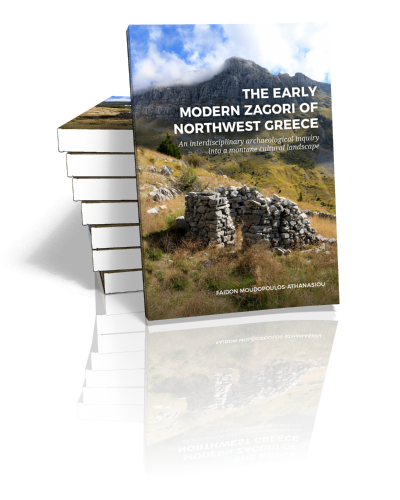 You can consult here the publication The Early Modern Zagori of Northwest Greece. An interdisciplinary archaeological inquiry into a montane cultural landscape by Faidon Moudopoulos-Athanasiou (2002), Sidestone Press.
You can consult here the publication The Early Modern Zagori of Northwest Greece. An interdisciplinary archaeological inquiry into a montane cultural landscape by Faidon Moudopoulos-Athanasiou (2002), Sidestone Press.
Over the past year, Dr. Moudopoulos-Athanasiou’s dedication to the Zagori region has been evident through various projects, publications, and outreach events conducted as part of his ICAC fellowship. These initiatives have included a project to clear and maintain local pathways to ensure accessibility, classifying and archiving tangible heritage, a summer school to promote the area’s cultural landscape and multiple events.
These activities not only underscore Dr. Moudopoulos-Athanasiou’s commitment to his research but also highlight the impactful role of ICAC in preserving and promoting the rich cultural heritage of Zagori.
Related news:
- “Enhancing the values of the cultural landscape of Aristi, Zagori, NW Greece”, GIAP website, June 27, 2023.
- “UNESCO World Heritage: 42 new sites inscribed”, UNESCO Press Release, September 25, 2023.
- “New book chapters! Advancing the study of the archaeology of the recent past in Greece”, GIAP website, July 20, 2023.
- “Two new book chapters! Delving into the rich heritage of Zagori”, GIAP website, May 30, 2023.
Dr. Faidon Moudopoulos-Athanasiou is a postdoctoral fellow with the project Heritage under young forests: recording and interpreting the cultureal heritage underneath the afforested Zagori (NW Greece). Juan de la Cierva (FJC2021-047943-I), funded by the Agencia Estatal de Investigación of the Ministerio de Ciencia e Innovación, the European Union-NextGenerationEU in the context of the Plan de Recuperación, Transformación y Resiliencia.

About the Catalan Institute of Classical Archaeology (ICAC-CERCA)
The Catalan Institute of Classical Archaeology (ICAC-CERCA) is a CERCA center established as a consortium in 2003 by the Government of Catalonia and the Rovira i Virgili University. It is a leading institution in the research and conservation of archaeological heritage in Catalonia. Its headquarters are located in Tarragona, a city recognized as a UNESCO World Heritage Site in the year 2000. Its researchers work to understand the past through the study of archaeological remains and promote the preservation of the rich historical legacy of the region. We are CERCA!
More information at www.icac.cat.
